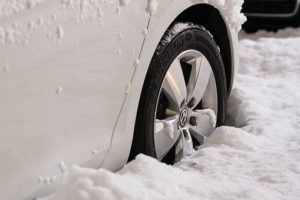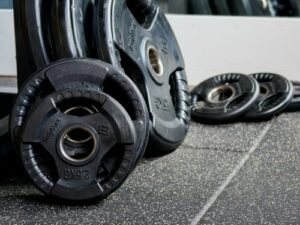What is Suspension System?
Suspension is the system of tires, tire air, springs, shock absorbers and linkages connecting a vehicle to its wheels and allowing relative motion between the two. Suspension systems must support both road holding, handling and ride quality which ordinarily are at odds with each other.
The tuning of suspensions involves finding the right compromise, in this article you will get to know more about effect of spring in car suspension. It is important for the suspension to keep the road wheel in contact with the road surface as much as possible, because all the road or ground forces acting on the vehicle do so through the contact patches of the tires.
The suspension also protects the vehicle itself and any cargo or luggage from damage and wear. The design of front and rear suspension of a car may be different.
Any four wheel vehicle needs suspension for both the front wheels and the rear wheels, but in two wheel drive vehicles there can be a very different configuration. For front-wheel drive cars, rear suspension has few constraints and a variety of beam axles and independent suspensions are used.
For rear-wheel drive cars, rear suspension has many constraints and the development of the superior but more expensive independent suspension layout has been difficult. Four-wheel drive often has suspensions that are similar for both the front and rear wheels.
Rear wheel drive vehicles today frequently use a fairly complex fully independent, multi-link suspension to locate the rear wheels securely while providing decent ride quality.

Different Types of Suspension Springs
There are varieties of springs in suspension system depending on the type of vehicle and its carriage capacity. There is Coil Spring which is a long, thin, torsion bar wound into a coil shape. Because the coiled wire twists during the spring’s compression and extension cycles, the coil spring actually operates on the same principle as a torsion bar.
Since a coil spring occupies a relatively small space, it can be used in a variety of suspension designs including MacPherson strut, solid axle with trailing arms, independently sprung rear axle, using a spring or coil-over shock absorber configuration.
In some cases, a coil spring can be designed as a variable rate spring that increases load-bearing capability as it’s compressed. Torsion-bar spring suspensions have been used for many years on vehicles equipped with short-long-arm (SLA) suspension systems.
As the name implies, the torsion bar is simply a round bar, approximately four feet long, that’s designed to twist as weight is applied to the suspension system.
Leaf Spring which consists of a number of leaves made of steel plates, of increasing lengths from the center. All the leaves are clamped by a center bolt at the center and side almost at the sides so that the leaves are in position.
Leaf spring has various types such as: transverse spring, semi-elliptical spring, quarter-elliptical spring, three-quarter elliptical spring, full elliptical spring, transverse spring and platform type spring.
Functions of Spring Suspension
Spring Suspension allows the vehicle to perform properly under a heavy load when control is limited by the inertia of the load. Riding in an empty truck used for carrying loads can be uncomfortable for passengers because of its high spring rate relative to the weight of the vehicle.
Any spring, whether it’s a leaf, torsion or coil spring, must compensate for irregularities in the road surface, maintain the suspension system at a predetermined height and support added weight without excessive sagging.
Spring suspension is extremely important in providing comfort, precise handling and load-bearing capability in the modern vehicle – three key areas that will raise customer concerns.
What is a Coil Spring?
Coil springs are a tightly wound piece of metal that is made up of carbon, silicon, manganese, and chromium. It is wound around a cylindrical instrument to give a certain radius.
It is also a helix of metal wire that is usually made of steel. Springs are mechanical devices that accept a weight or force from one object to absorb the energy and to prevent the surface from being damaged.
The amount of material that it is made up from varies depending on the amount of pressure it is required to withstand as well as how often. It also is contingent on the temperature conditions it is expected to work under—will it need to withstand corrosion, and if the coils will be expected to conduct electricity.
For the purposes of auto mechanics, the main concerns of a coil spring are the load amount and temperature conditions.

The Purpose/Functions of Coil Spring
Coil springs can support a massive amount of weight. Coil springs are a necessary auto part that is implemented in our vehicles to improve transportation. Without them, vehicles will sag from any weight that exceeds its maximum capacity.
Most heavy-duty vehicles are built to take on an excessive amount of weight, but if for some reason, it goes over that amount, the axles could break.
Coil springs are designed to absorb energy. As pressure is applied to a coils spring, the energy from what’s causing that pressure is transferred into the compressed coils. As that same amount of pressure is alleviated, the energy within the spring is too. In other words, coil springs stores energy.
Compression coil springs are designed to push back on a surface when it comes into contact with it. They offer resistance to a compressive force and are usually coiled as a constant diameter cylinder, or one that has the same size curves to its helix shape.
Coil springs are used in car suspension systems and clutches, as well as valve springs. Springs are also used in mechanical devices, such as toasters, door handles and other types of handles that are constantly depressed
Coil springs provide a vehicle with a smoother ride. Although coil springs are made from tough material, its design allows it to be flexible. Therefore, as a vehicle runs into unavoidable bumps in the road, the coil spring has enough elasticity to retract and retain its original form.
Coil springs work in conjunction with the shock absorbers in a vehicle. As a result, it makes it possible for trucks to transport heavy loads. Without the coil spring, any weight that exceeds its original capacity amount will render the car or truck inoperable, as it will buckle from the weight.
Coil springs cannot only absorb that amount of weight but also has the capability to ‘spring’ back any additional resistance during transportation.
When operating heavy-duty vehicles, it is important to make sure your coil springs are in good shape. If they aren’t, it’s important to get them replaced as soon as possible but most importantly, you need to familiarize yourself what a coil spring is.
What is a Leaf Spring Suspension?
Leaf springs are long bundles of spring material that flex when under pressure from the moving of a vehicle’s axle. The ends of the leaf spring bundle are attached to the chassis of the car or truck, and the axle is then attached to the center of the leaves.
When the axle moves on various road conditions, the leaves compress and absorb the motion rather than transferring all the energy directly to the chassis.
How Leaf Spring Suspension Works
Mostly used by trucks and heavy-load vehicles, leaf spring absorbs shocks on bumpy rough and coarse road surface. It is the supportive backbone of your vehicle suspension system if you drive any heavy-load carrying trucks or farm earth movers.
Without leaf springs to absorb the shock, you would feel every knock and jar from every pothole or uneven road.
Imagine if your axle was connected directly to the body or your car or truck, you will see that every time the wheels and axle move upwards the body does so as well.
This would cause the passengers to move with the vehicle and feel every bump.

When Do I Change My Spring Suspension?
Should your leaf springs become worn, cracked or broken they will not perform the function necessary to ensure a smooth ride.
If your car or truck is sitting lower on one side than the other, it might be that your leaf springs are sagging and need to be replaced before they break. You should also remove the tires and inspect for cracks or wear on the leaf springs after removing any dirt and grime with a wire brush.
If your leaf springs have gotten to the point where you can feel every bump, or you hear a crunching sound when driving on rough terrain, you are advised to have them inspected and replaced.
Early inspection is the best way to prevent suspension damage. One easy way to see if you are starting to have trouble is to park your vehicle on an even surface and look at the vehicle from the front and back while crouching low.
Before replacing a spring, check for correct tire pressure and size, then record the vehicle’s suspension height at all four wheels.
Replace one spring at a time to ensure that critical parts like ABS wiring and brake hoses are correctly reinstalled.
Cotter pins, self-locking nuts and interference-fit bolts should be replaced with new ones. To achieve accurate suspension height, always torque the suspension bushing pivot nuts with the full weight of the vehicle on the suspension system and at normal suspension height.
If the coil spring is incorrectly seated, an unwanted increase in suspension height will result so ensure that any rubber isolator pads or other hardware is in good condition and installed in their correct positions.
When replacing coil springs, ensure that the springs are indexed correctly from left to right and seated correctly in the spring seats located in the control arm and chassis.
All bolts should be installed in their original locations and positions. Bolts should also be lightly lubricated with a non-friction modified lubricant, such as common motor oil, and torqued to specification.
Conclusion
Suspension system plays an important role in the life of your vehicle; it is as important as your engine. It helps maintain longevity of the tire and the vehicle’s worthiness on the road.
Much as it carries the heavier proportion of the car load, getting a good, long-lasting suspension spring can never be a bad idea for a driver who cares for smooth and comfortable ride.
We hope you find our spring in car suspension article enlightening. If you have a comment or question kindly leave it in the box below, we will be glad to hear from you.



